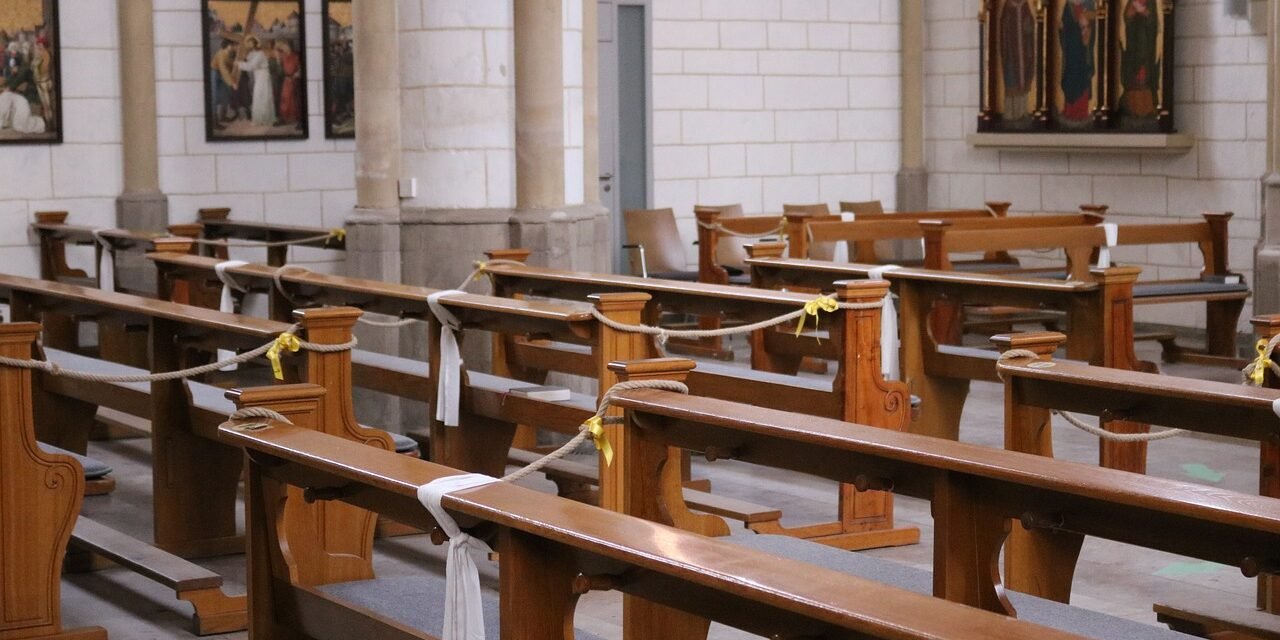In the midst of this pandemic, congregations have often been in the news (not always for good reasons). Newspaper columnists are writing about how we need what religion has to offer and how we miss the little things, like singing together, as well as highlighting the creative ways religious communities are staying connected.
Meanwhile leaders of local congregations are scrambling to learn new skills, and members are gathering in new ways. Bible studies and committee meetings are via Zoom. Caregivers are setting up old fashioned phone calls and cards for vulnerable and isolated members. Food pantries are staying open to serve the increased need. Much of what it means to be a congregation continues, even with empty pews
But so much has changed! What does it even mean to be a congregation these days? We can’t physically gather for worship or, even worse, to mourn our dead. Is now the time to be worried about studying congregations?
Yes. Just as epidemiologists urge us to gather data in the midst of the storm, this is a critical time to learn about how this crisis and your new ways of gathering are changing your congregation. There just may be some new patterns that you’ll want to keep.
Here are some questions and ideas to think about.
Your congregation’s culture. You are still a group with a distinctive identity, even if dispersed. How is your story being communicated? Consider observing whatever on-line productions you have, especially your primary worship events. It’s not the same as being physically present, but you can step back to watch for the visual and verbal cues. Who do they say you are?

Think about what a first-time visitor might see. In fact, you’ve probably had first-time visitors, as well as some people tuning in who haven’t been physically present for a long time. If you are able to, arrange a facetime chat or email to interview them about what they are experiencing. How might they become more fully “members” – even if they remain connected just digitally?
Your ecology. It’s not exactly the neighborhood right now, but assessing your connections is still critical. If you have data from your online platforms, take attendance! Who is missing? Who has trouble with technology? Who doesn’t have access?

Your resources. You’ve undoubtedly discovered some gifts you never dreamed you had – not just some mysterious new donor or an SBA grant, but people with talents and energy who have stepped up. Don’t forget to say thanks. But you have probably discovered some holes, as well. You will need a good accounting from your treasurer to see where money is and isn’t arriving, but you also need a conversation among your staff and lay leaders about what they would like to be able to do and where you might find new resources to do it.
Your process. When you have that conversation, remember that Zoom meetings can be hard, and they can aggravate existing power differences. Pay attention to who has access and to who gets heard.
Your theology. Think about convening a focus group (physically distanced, of course) of thoughtful members and other leaders. What theological resources are you depending on just now? What insights about God and God’s work in the world are emerging from this time?
Dr. Nancy T. Ammerman is Professor Emerita of Sociology of Religion in the School of Theology and the Sociology Department at Boston University. A longtime member of the Congregational Studies Team, she is Project Director of StudyingCongregations.org

